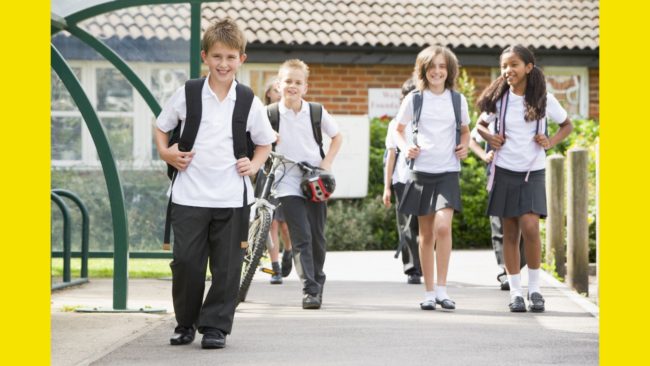
Allowing your child their first taste of freedom with a solo walk to school can be a nerve-wracking prospect for parents. Many what-ifs may run through your mind and you might feel hesitant to allow it.
Here’s some tips on what to consider.
What is age-appropriate?
You’ll likely know when your child is ready to walk alone as you’ll feel confident to let them. In general most kids begin walking to school between the ages of 9 and 11. However, if your child isn’t very savvy with crossing the road yet then you could walk with them, practising looking both ways carefully until they seem ready.
You’ll also want to consider whether your child knows not to talk to strangers, and if you feel that they’d know what to do when faced with that situation.
Take safety measures
One helpful way to monitor your child on their walk to school is using an app like Find My iPhone, which you can use to follow their journey. Bear in mind, however, that these apps can stop tracking if their phone is turned off.
You can also give your child a personal alarm, which they can put in their pocket or attached to their bag should they need it.
Walk with friends
There’s safety in numbers. If your child can arrange to walk to and from school with a friend or two then you’re likely to feel more reassured about their safety. If possible, note your child’s school route buddy’s phone number in case of an emergency.
Consider the route
If the walk to school is mainly busy roads and built-up areas then it’s safer; routes through countryside areas and alleyways less so. If possible, agree between you that your child will stick to a safe route every day and avoid dodgy short cuts. Make sure they know they must never deviate from the agreed route.
Be street savvy
Make sure kids know the rules of the road as soon as they are old enough to learn: show them how to use different types of crossings, and how to cross when there is no crossing available.
It’s also a good idea to teach them what to do if someone approaches them or follows them- going to the nearest house or shop is a good tactic. Also make sure they know never to walk with headphones in or with their attention on their phones. Lastly, teach them to never accept lifts off of strangers.
Cycling to school
If your child has passed their cycling proficiency they may prefer to cycle to school. Plan the route they will take and ensure they will avoid dangerous junctions and tricky roundabouts.
Check that their bike is in good working order and the brakes work well. They will need a helmet and lights for their bike. It is also a good idea to give them a reflective jacket or fluorescent item of clothing to wear so that they can be easily seen by drivers.
Public transport
If your child has to take a bus or train to school you can start preparing them for going it alone by doing practice journeys together. Remind them to always leave on time and have the right money or pass with them.
Talk with your child about what to do if they miss the bus or train- make a plan. Make sure they know never to run in front of the bus- better to miss it!
If possible, try to arrange for your child and their school friends to travel together every day.
To talk to other dads come and join our friendly forum.







